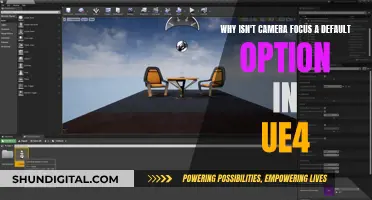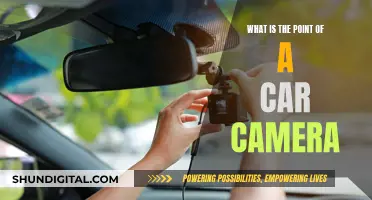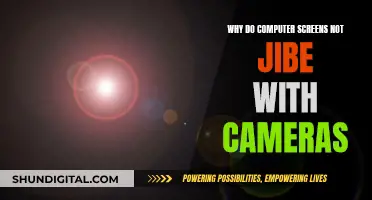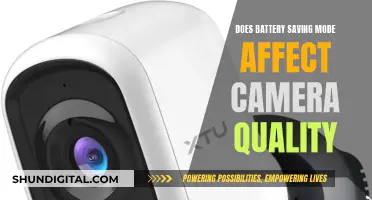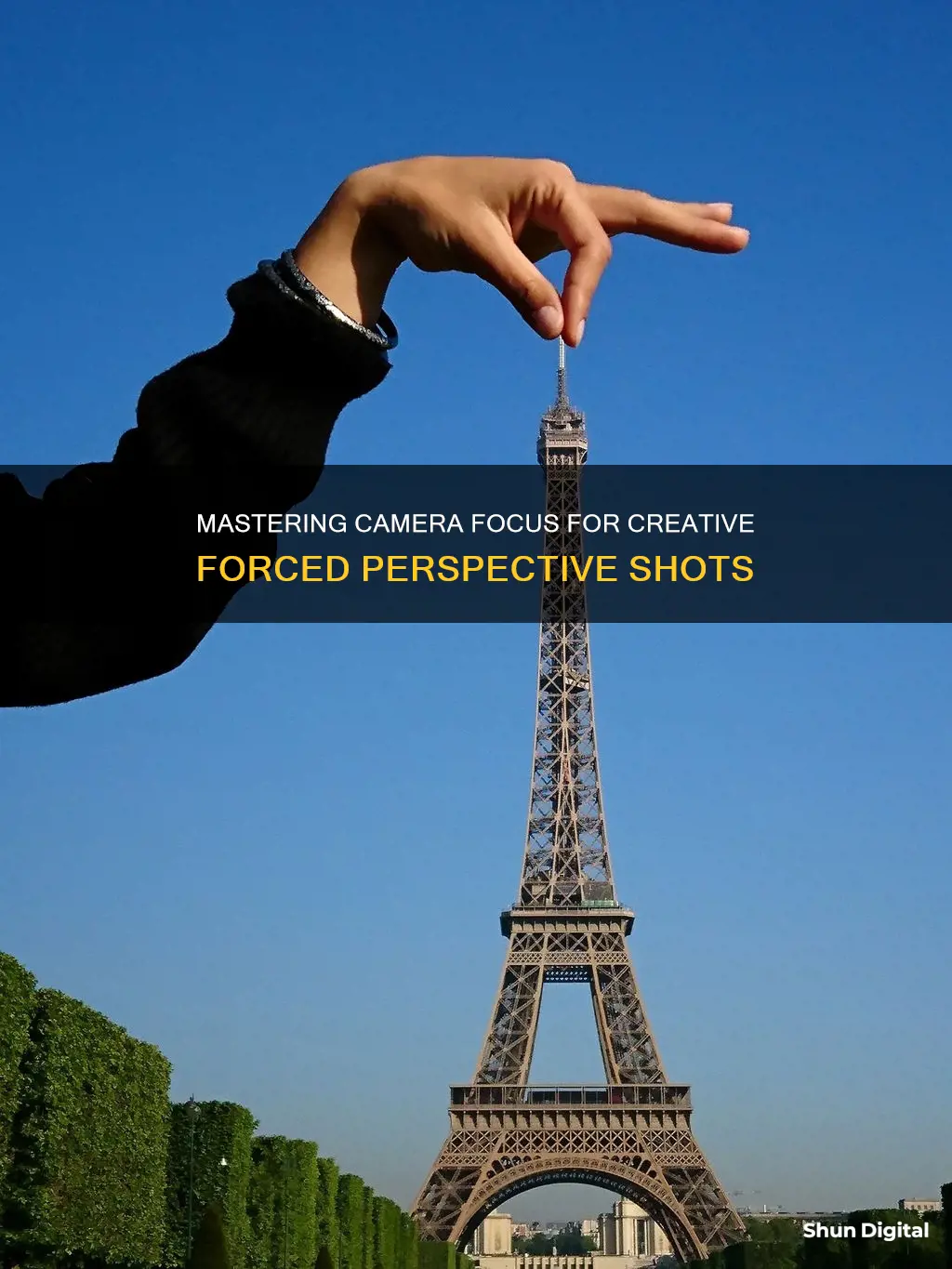
Forced perspective is a technique used in photography and filmmaking to create optical illusions, making objects appear larger, smaller, closer, or farther away than they are in reality. This effect is achieved by manipulating the distance between objects and the camera, as well as the line of sight from which the shot is taken. To achieve this, photographers must pay close attention to the composition, zoom, and perspective of their shots. One key factor in achieving the forced perspective effect is the use of a narrow aperture, such as f/16, to ensure that both the foreground and background objects remain in focus. Additionally, a wide-angle lens can make it easier to compose the shot, providing more options for creating different sizes of subjects.
| Characteristics | Values |
|---|---|
| Technique | Optical illusion |
| Purpose | Make objects appear larger, smaller, farther away, or closer than they are |
| Equipment | Wide-angle lens |
| Aperture | Small (e.g. f/16) |
| Zoom | High |
| Lighting | Bright light on distant objects, natural light |
| Composition | Simple, harmonious, balanced, rule of thirds |
| Perspective | Bird's eye view, low angle |
What You'll Learn

Use a wide-angle lens
Using a wide-angle lens is not necessary for forced perspective photography, but it does have its advantages. Firstly, it gives you a wider field of view, allowing you to capture more of your scene or location in the frame. This is particularly useful when you need to fit large objects or buildings into your shot, as is often the case with forced perspective images.
Wide-angle lenses also allow you to get closer to your foreground subject without cropping out the background. This is beneficial when creating forced perspective images, as you can create the illusion of your foreground subject interacting with the background. For example, making it appear as though someone is holding up a building or touching the sun. By getting closer to your foreground subject, you can emphasise this interaction and make the illusion more convincing.
Another advantage of using a wide-angle lens is the increased depth of field. This means that both the foreground and background objects in your image will be in focus without needing to use a very narrow aperture. Keeping everything in focus is important for convincing the eye that the objects are at the same distance from the camera.
When using a wide-angle lens, be careful not to go too wide, as this can introduce distortion. You also don't want to go too long with your lens, as this will not give you the same effect. While a wide-angle lens is a useful tool for forced perspective photography, it is not essential. You can create forced perspective images with just about any lens and camera by thinking creatively and composing your photo with a new perspective in mind.
Where to Buy Camera Batteries: Walgreens and Beyond
You may want to see also

Use a small aperture
Using a small aperture is an important technique in forced perspective photography. A small aperture, also known as a narrow aperture, is essential for keeping all elements of your image in focus. This is crucial for convincing the viewer's eye that the objects in the foreground and background are at the same distance from the camera.
A narrow aperture of f/16 is recommended for most cases. This setting will ensure that everything in your image is sharp and in focus. However, using a smaller aperture requires more light. Therefore, it is important to ensure your scene is well-lit or adjust your ISO settings to compensate.
While a shallow depth of field can be used for creative effects, it is generally recommended to keep everything in focus when using forced perspective. This helps maintain the illusion and ensures that all elements of your composition are clearly visible.
By using a small aperture, you can create a wide focus effect, making the objects in your image appear closer together. This technique is especially useful when trying to create the illusion of objects interacting or merging.
Additionally, a small aperture can help guarantee a beautiful, soft image. It is important to note that using a higher aperture will result in losing light, so ensure you have adequate lighting conditions to achieve the desired effect.
Best Cameras for RAW Photography Enthusiasts
You may want to see also

Make objects appear larger
Forced perspective is a technique that uses optical illusions to make objects appear larger, smaller, farther away, or closer than they are in reality. It is a simple yet effective way to manipulate human perception and can be achieved through photography and filmmaking. Here are some tips to make objects appear larger through forced perspective:
Planning and Composition
Before shooting, it is important to plan your composition and think about the scene you want to capture. Consider the location, the props needed, and the number of subjects involved. The composition is critical to achieving the desired optical illusion. Place the object you want to appear larger closer to the camera and the object you want to appear smaller farther away. Ensure that the objects are in the same focal plane and that the foreground and background are both in focus.
Camera Settings
Use a wide-angle lens to capture forced perspective images. Anything under 35mm is considered a wide-angle lens, but going slightly wider can give you more flexibility. A narrow aperture, such as f/16, is also recommended to keep everything in focus. However, using a smaller aperture will require more light, so ensure your scene is well-lit or adjust your ISO settings accordingly.
Creativity and Angles
Creativity is key when using forced perspective. Play around with different angles, such as shooting from a low angle or a bird's-eye view. Experiment with different poses and compositions to create unique and meaningful images that stand out.
Lighting
Lighting plays a crucial role in forced perspective photography. Ensure your scene is well-lit, especially when using a small aperture, as this will require more light. Pay attention to the lighting of the objects in the photo, as differences in lighting or blurriness can make the effect appear fake.
By following these tips and experimenting with different techniques, you can effectively use forced perspective to make objects appear larger in your photos and films.
Charging the Fuji X-A10: A Step-by-Step Guide
You may want to see also

Make objects appear smaller
Forced perspective is a technique that employs optical illusion to make an object appear larger, smaller, closer, or farther away than it is in reality. It is often used in photography and filmmaking to create interesting visual effects and manipulate the viewer's perception of the scene.
To make objects appear smaller using forced perspective, follow these steps:
- Place the object farther from the camera: The key to making an object seem smaller is to increase its distance from the camera. This will create the illusion of the object being farther away and, therefore, smaller in size.
- Use a wide-angle lens: A wide-angle lens, typically anything under 35mm, will provide more options for creating different sizes of subjects in your frame. It will also allow you to get closer to your foreground subject.
- Use a high zoom: By using a high zoom, you can achieve a wider area of focus, making it easier to compose your image and manipulate the perspective.
- Use a higher aperture: Aperture plays a crucial role in determining the depth of field. By using a higher aperture, such as f/16, you can keep all the subjects in focus, ensuring that both the foreground and background remain sharp.
- Choose your angles carefully: Experiment with different angles to enhance the forced perspective effect. Try shooting from a low angle, which creates a sense of depth and intimidation, or a bird's-eye view, which captures the subject in its entirety.
- Plan your composition: Take time to plan your shot and consider the placement of objects and subjects within the frame. Ensure that all elements in the frame contribute to the optical illusion and exclude any distracting objects that do not complement the narrative.
- Use natural lighting: Adequate lighting is crucial for effective forced perspective. Ensure you have plenty of natural light or adjust your ISO settings to compensate for low-light conditions.
By following these steps and experimenting with different techniques, you can effectively use forced perspective to make objects appear smaller in your photographs and films.
Newmowa Camera Battery Chargers: Compact, Efficient Power Solutions
You may want to see also

Make objects appear closer or farther away
Forced perspective is a technique that uses optical illusions to make an object appear closer or farther away, larger or smaller than it is in reality. Here are some tips to make objects appear closer or farther away using forced perspective:
Object Placement
The placement of objects within the frame is crucial to creating the desired optical illusion. To make an object appear larger, place it closer to the camera. Conversely, to make an object seem smaller, position it farther away from the camera. This manipulation of distance alters the viewer's perspective, creating the illusion of altered size.
Maintain Focus
To convincingly portray objects at different distances as being in the same focal plane, ensure that both the foreground and background objects are in focus. This can be achieved by using a narrow aperture setting, typically around f/16. A shallow depth of field can sometimes be effective, but keeping everything sharp is generally the best approach. Remember that a smaller aperture will necessitate more light, so adjust your lighting or ISO accordingly.
Choose the Right Lens
Utilising a wide-angle lens can greatly facilitate forced perspective photography. Wide-angle lenses offer a wider field of view, allowing you to get closer to foreground objects without cropping out the background. This provides more space in the frame to effectively position objects. While not mandatory, a wide-angle lens grants more flexibility and simplifies the process.
Planning and Simplicity
Careful planning of your composition is essential for successful forced perspective photography. Consider the location and experiment with the placement of objects to refine your shot. Keep the composition simple, limiting the elements in the frame to those necessary for the illusion. Each additional element introduces the risk of detracting from the desired effect.
Creative Collaboration
Forced perspective photography can be challenging to execute alone. Collaborating with another person can be beneficial, as they can assist with object placement, fine-tuning, and holding objects or assuming specific poses. This not only speeds up the process but can also spark new creative ideas through collaboration.
Congestion Charge Cameras: Effective or Invasive?
You may want to see also
Frequently asked questions
Forced perspective is a technique that uses optical illusions to make objects appear larger, smaller, farther away, or closer than they are.
Place the object closer to the camera.
Move the object farther from the camera.


